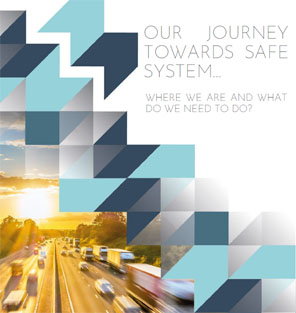There is a lack of clear, coherent leadership at a national level to deliver a holistic safe system approach to road safety, a new report has found.
Transport behaviour and road safety consultant Agilysis said its new white paper evaluates the current climate in the UK for delivery of a Safe System and expands on its Safe System Capacity Survey last year.
 The safe system approach has become best practice in the road safety world. At its most basic, the approach recognises that humans make mistakes – or rather have limitations - and so tries to build an environment in which a mistake will not cost a life.
The safe system approach has become best practice in the road safety world. At its most basic, the approach recognises that humans make mistakes – or rather have limitations - and so tries to build an environment in which a mistake will not cost a life.
To do this it considers the interaction of different components of the transport system, rather than addressing individual issues separately. This creates a holistic approach where different components interact systematically to minimise risk and preventative’ action is taken by all stakeholders and road users, with an equally strong recognition that a proactive rather than reactive ethos is critical.
The components of a safe system are: safe roads and roadsides; safe road users; safe vehicles; safe speeds and the post-crash response.
The Agilysis report found ‘a lack of clear, coherent leadership at a national level in respect to our commitment to Safe System as a coordinated, multi-sectoral, inter-disciplinary application of interrelated responses, supported by evidence and evaluation’.
It suggested that the situation will be helped by the planned creation of the Road Safety Investigation Branch by the Department for Transport) ‘and will hopefully be supported through the forthcoming strategic framework for road safety’.
However, the strategic framework is significantly delayed. It was expected in 2022 but last Autumn transport secretary Mark Harper told MPs that officials were working towards publication in the 2022-23 financial year. He said the framework ‘will be based on a safe system approach and as part of this we are considering what might be appropriate as supporting indicators on casualty reduction’.
As for the Road Safety Investigation Branch, in March this year roads minister Richard Holden confirmed that the Government is still committed to creating the investigation branch but declined to say when it will be up and running.
'The Government intends to bring forward measures to enable the creation of a Road Safety Investigation Branch as soon as Parliamentary time allows,’ he said.
Since the Government first confirmed the plan for the investigation branch last summer, based on the annual average, around 1,700 people will have died on UK roads - apparently with no lessons learned.
The Agilysis survey found that local highway authorities were generally aware of the Safe System concept.
The report added: ‘For a notable proportion of those who answered, however, the Safe System means changes to only “engineering measures”, “education, training, and publicity”, or the “operating speeds” of the road network. Equally, as many respondents successfully identified all five of the components of the system, with these respondents often relaying many of the principles which underpin the Safe System approach.’
While Vision Zero was frequently cited as the overarching goal of the Safe System, ‘there was a lack of recognition by some around the need for post-collision response and safe vehicle enhancements, and almost universally, there was minimal recognition of the Safe System levers needed to facilitate strategic action under Safe System components’.
 Commenting on the report, Dr Suzy Charman, executive director of the Road Safety Foundation, told Highways: ‘Working towards the implementation of a safe system will require us to collectively move away from an incremental approach to road safety, in favour of a systematic and proactive approach to treating and eliminating the possibility of death and serious injury on our roads.
Commenting on the report, Dr Suzy Charman, executive director of the Road Safety Foundation, told Highways: ‘Working towards the implementation of a safe system will require us to collectively move away from an incremental approach to road safety, in favour of a systematic and proactive approach to treating and eliminating the possibility of death and serious injury on our roads.
‘What that will mean is shifting our focus away from trying to reduce human error when the events that lead to crashes are more often than not a result of normal human processing limitations, and instead putting the focus on the systematic actions that could be taken to reduce the potential for fatal and serious injury. It also means looking afresh at human tolerances of crash forces and the notion of survivability of crashes.’
Dr Charman added: ‘In the UK we are at the beginning of our safe system journey. We are going to need to find ways of embedding this fresh perspective throughout design standards, appraisal methodologies, risk assessments, crash investigation approaches, vehicle legislation, transport and development planning and a lot more.
‘It will require strong leadership, brave policy making, some very difficult decisions, innovation, upskilling and sustainable funding for us to make the progress necessary to see significant casualty reduction and, in the longer term, to realise the vision for zero road deaths.’





